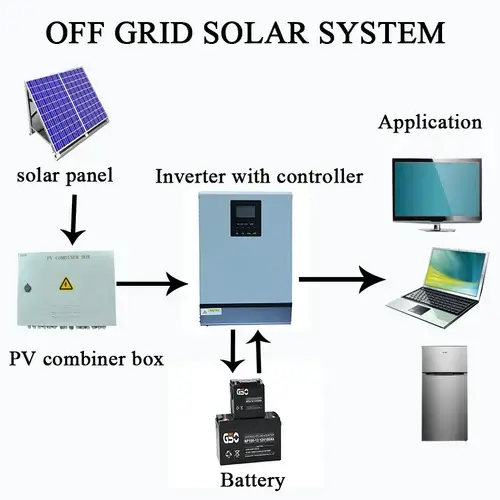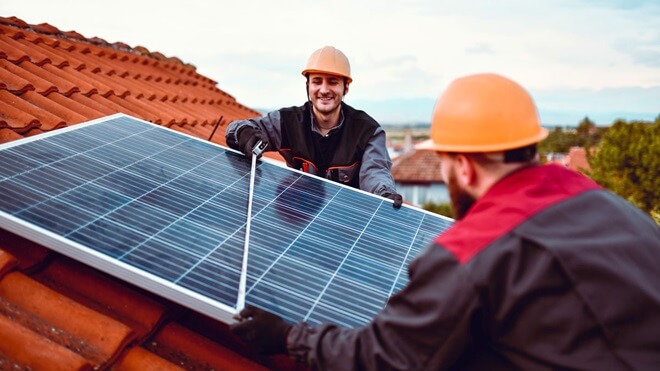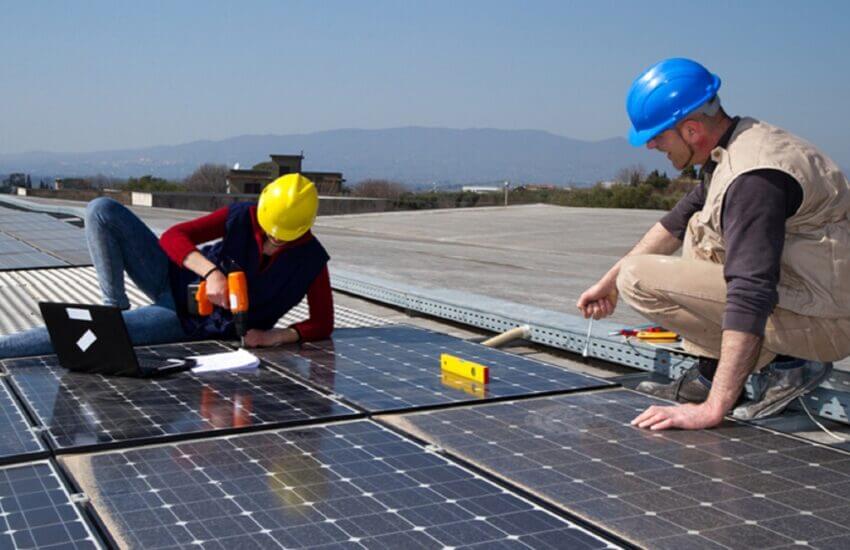Introduction to Solar Energy System Maintenance
Switching to solar energy is a great way to reduce your carbon footprint and save on energy costs. But like any investment, solar energy systems require regular care to function efficiently and last for years. Maintaining your solar energy system ensures it operates at peak performance and maximizes energy production.
Inspecting Solar Panels
Visual Inspection for Dirt and Debris
Your solar panels are exposed to the elements, making them prone to accumulating dirt, leaves, and other debris. Regular inspections can prevent these obstructions from reducing energy efficiency. Use a visual check to spot any buildup and clear it off promptly.
Checking for Physical Damage or Cracks
Over time, panels can develop cracks due to weather extremes or accidents. These cracks compromise the system’s ability to harness sunlight effectively. Inspect your panels for any signs of physical damage and address issues quickly.
Signs of Wear and Tear on Connections
Wiring and connections are the lifelines of your solar system. Look out for frayed wires, corroded connectors, or loose ends that can interrupt energy flow. Catching these issues early prevents major outages.
Cleaning Your Solar Panels
Why Clean Solar Panels Improve Efficiency
Dust, bird droppings, and grime can block sunlight from reaching your panels. A clean panel can boost energy production by up to 20%. Cleaning is one of the simplest ways to keep your system running efficiently.
Safe Cleaning Techniques
Use soft brushes, microfiber cloths, and gentle cleaning agents to avoid scratching the panels. Avoid pressure washers, as high-pressure streams can cause damage. Rinse thoroughly to remove residues that might attract more dirt.
How Often Should You Clean Solar Panels?
Cleaning frequency depends on your environment. If you live in a dusty area or near trees, clean your panels every few weeks. In less polluted areas, a quarterly cleaning schedule should suffice.
Monitoring System Performance
Using Solar Monitoring Software
Modern solar systems come equipped with monitoring tools to track performance. Apps and software provide real-time insights into energy production and alert you to potential issues.
Tracking Energy Output Trends
Pay attention to any drops in energy output. Sudden dips could indicate dirty panels, damaged inverters, or malfunctioning components.
Identifying Underperforming Panels
Monitoring tools can pinpoint which panels are not working as expected. Swiftly addressing these underperformers ensures your system’s overall productivity remains high.

Maintaining the Inverter
Role of the Inverter in Solar Systems
The inverter converts the DC electricity generated by your panels into AC electricity for home use. Without it, your system cannot deliver usable power.
Regular Inverter Inspections
Check the inverter’s display panel for error messages and ensure it’s operating correctly. Look for unusual noises or heating issues, as these could signal a problem.
Troubleshooting Common Inverter Issues
Common problems include tripped circuit breakers or poor wiring connections. Consult the manual or contact a professional if these occur.
Checking Battery Storage Systems
Importance of Battery Maintenance
If you use battery storage, it’s vital to maintain it properly. Batteries store excess energy, ensuring power is available during nighttime or cloudy days.
How to Test Battery Efficiency
Regularly test your battery’s charge and discharge cycles. Over time, batteries lose efficiency, so tracking performance helps you decide when replacements are needed.
Extending Battery Lifespan
Keep batteries in a cool, dry place and avoid overcharging or depleting them completely. Proper care can significantly extend their lifespan.
Inspecting Mounting Structures
Why Sturdy Mounting Matters
Mounting structures hold your solar panels securely in place, ensuring they remain positioned optimally to capture sunlight. Weak or unstable mounting can lead to panel misalignment, reduced efficiency, and potential damage during strong winds or storms.
Detecting Corrosion or Loose Bolts
Regularly inspect the mounting structures for signs of rust, corrosion, or loose bolts. Rust can weaken the structure, while loose fittings might cause panels to shift, reducing their ability to harness sunlight effectively.
Addressing Structural Issues Promptly
If you notice any issues, act quickly. Tighten loose bolts, replace corroded parts, and consult a professional for severe structural problems to avoid costly repairs or safety hazards.
Electrical Component Maintenance
Examining Wiring and Connections
The electrical system of your solar setup is its nerve center. Inspect wires for cuts, wear, or exposure, which can disrupt energy flow or pose a safety hazard. Ensure all connectors are firmly attached.
Ensuring Proper Insulation
Properly insulated wiring prevents short circuits and other electrical failures. Damaged insulation should be replaced immediately to avoid performance losses or safety risks.
Avoiding Electrical Hazards
Regular maintenance helps prevent potential electrical hazards like sparking or overheating. Always turn off the system before inspecting or repairing electrical components to ensure safety.
Seasonal Maintenance Tips
Preparing for Winter Weather
Winter can bring snow, ice, and cloudy conditions, reducing panel efficiency. Remove snow buildup with a soft broom or specialized tool and check for ice damage to panels and mounts.
Handling Extreme Summer Heat
High temperatures can stress your inverter and batteries. Ensure proper ventilation around these components and avoid placing batteries in direct sunlight to maintain optimal functionality.
Adapting to Rainy or Stormy Seasons
Heavy rain or storms can lead to debris accumulation and potential water ingress. After a storm, inspect your system for damage, clean panels of any mud, and tighten loose fittings.

Professional Inspection and Servicing
When to Call a Solar Technician
While routine maintenance can often be handled DIY, certain issues require expert intervention. If you notice persistent performance drops, strange noises, or physical damage, it’s time to call a professional.
Benefits of Annual Professional Checkups
Professional inspections can uncover hidden issues and optimize system performance. Technicians can check electrical connections, inverters, and panel alignment, ensuring everything operates smoothly.
Cost of Professional Maintenance Services
The cost of professional services varies but is often outweighed by the savings in energy production and the prevention of expensive repairs. An annual checkup is a worthwhile investment in your system’s longevity.
Common Solar Maintenance Mistakes to Avoid
Overlooking Regular Inspections
Skipping inspections can lead to minor issues escalating into major problems. Schedule regular checks to stay on top of your system’s condition.
Using Improper Cleaning Tools
Avoid abrasive materials or harsh chemicals that can scratch or damage your panels. Stick to soft brushes, gentle detergents, and plenty of water for cleaning.
Ignoring Manufacturer Recommendations
Each solar system is unique, and manufacturers provide specific maintenance guidelines. Ignoring these can void warranties and lead to avoidable damage.
Benefits of a Well-Maintained Solar Energy System
Maximizing Energy Output
Well-maintained systems operate at peak efficiency, ensuring you get the most energy output possible, even during less favorable weather conditions.
Extending System Lifespan
Routine care prevents wear and tear, allowing your system to function effectively for decades. A well-maintained system can often exceed its expected lifespan.
Saving Money on Repairs and Replacements
Proactive maintenance minimizes the risk of costly repairs and replacements, protecting your investment and keeping energy costs low.
DIY vs. Professional Maintenance
Tasks You Can Safely Handle Yourself
Simple tasks like cleaning panels, inspecting for dirt or debris, and monitoring system performance can be done safely by most homeowners with basic tools and knowledge.
Complex Tasks Best Left to Professionals
Electrical repairs, inverter troubleshooting, and major structural issues require expertise. Attempting these without proper training can lead to more harm than good.
Balancing DIY Efforts and Expert Assistance
A combination of regular DIY maintenance and periodic professional inspections ensures your system stays in top shape without overburdening you with tasks.
Final Maintenance Checklist
Weekly, Monthly, and Annual Tasks
- Weekly: Monitor energy output for any sudden changes.
- Monthly: Clean panels and inspect for visible damage or debris.
- Annually: Schedule a professional inspection for a comprehensive review.
Emergency Preparedness for Solar Systems
Keep an emergency kit with essential tools and contact information for your solar technician. Quick action during a storm or power outage can minimize damage.
Long-term Maintenance Planning
Maintain a log of inspections, repairs, and servicing. This record helps you stay organized and ensures no critical tasks are missed over the years.
Conclusion
Maintaining your solar energy system is not just about keeping it clean—it’s about ensuring it delivers the promised efficiency and longevity. By following a mix of DIY efforts and professional checkups, you can enjoy the full benefits of solar energy without interruptions. Proactive care will save you time, money, and energy, allowing your system to shine brightly for years to come.
